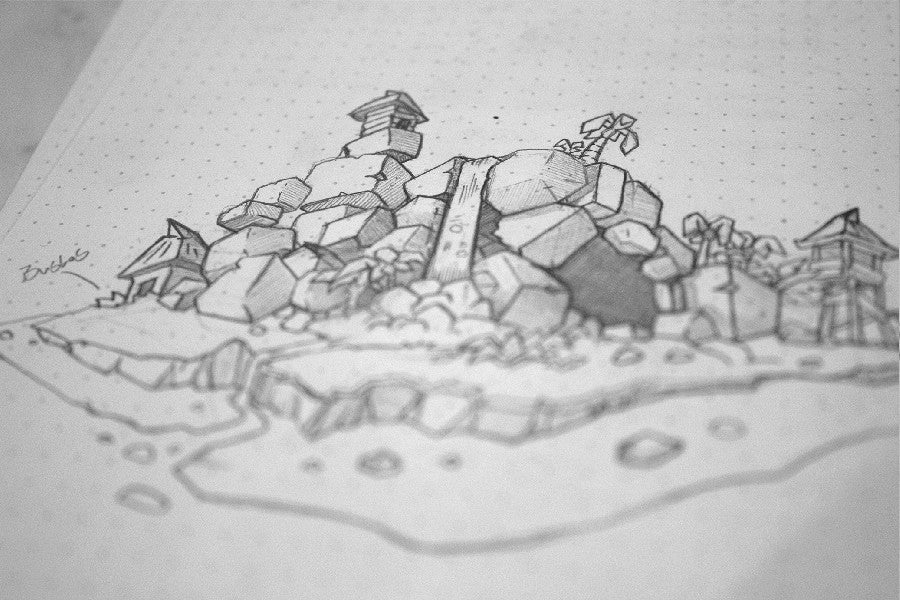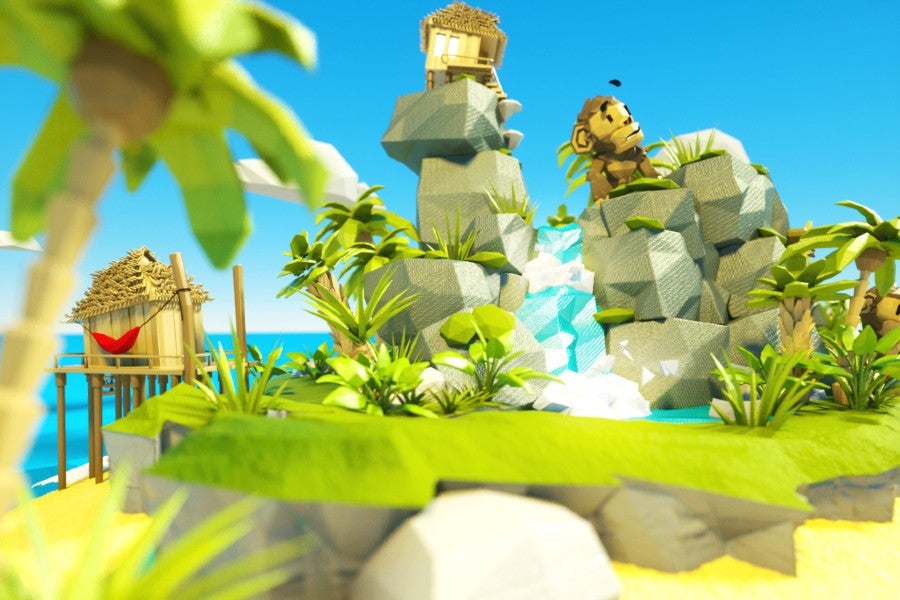The Virtual Reality of Art
Graphic design alumnus Tyler Johnson co-founded Triptych Interactive and has a client list with some of the biggest names in the U.S., such as Meta, Microsoft and Google Jigsaw.
Janel Shoun-Smith | 615-966-7078 |

You know those “cute” error message screens or “please wait a moment” messages that just seem to fit perfectly with the personality of the company you are checking out online? The ones that make you smile and stick around while the computer is churning?
Someone had to design those, and it was likely an art major.
Lipscomb alumnus Tyler Johnson (BA ’07), founding partner and chief technical officer of Triptych.co. in Chattanooga, has designed his share, as well as far more complex immersive online experiences and virtual reality environments. He started the company that would become Triptych almost immediately after graduation with his major in graphic design and a minor in information systems.

Today Johnson and Triptych has a current and former client list with some of the biggest names in the U.S., such as Meta, Microsoft and Google Jigsaw. The team creates products such as interactive touch displays and interactive maps. They have created virtual reality scenarios to help police learn de-escalation techniques, plus user-facing websites, illustrations and back-end web systems for various companies such as The Atlantic magazine, The North Face, UltraCart and the Buntin Group.
Johnson started his career with a short stint in a Nashville public relations firm, but quickly moved on to start his own graphic design firm, then-called Level 2 Design, with his brother Nathan (now chief creative officer). The firm really took off once the FBI chose their firm to do various web projects, said Johnson.
“The FBI really did enhance a lot of what we were doing,” said Johnson. The Johnson brothers did a lot of interactive and 3D work in Adobe’s Flash, a multimedia software used to create interactive web content, animation and videos, for the bureau’s children’s pages and its 10th anniversary website for the 9/11 attacks. “It was ideal for me because I got to do a lot of art and illustration,” said Johnson.

Tiptych's sketch of the tropical island in the FBI's SOS online game for children.

Triptych's final interactive digital image for the tropical island in the FBI's SOS online game.
Along the way, the firm’s name was changed to Triptych, and grew to 12 people at its largest. To create its visually immersive experiences, Triptych works in the user interface (UI) space, developing all the illustrations and also all the coding to create movement and interaction.
The best example of their work, says Johnson, is the FBI’s web game SOS, Safe Online Surfing (sos.fbi.gov), for elementary school children. Through a nine-month process, the company first created concept artwork and sketches, then a team created all the computer 3D objects and then a third team incorporated the 3D objects into the design.
“We did everything except the writing of the content,” said Johnson. “We worked hard to make SOS an experience that would keep kids engaged in order to communicate concepts that some may find pretty boring.”
The world of graphic design was a perfect marriage of the factors Johnson was looking for in a career, he said.

“This is exactly what I wanted to do,” said Johnson, originally from Knoxville. “My mother was an art teacher and I loved art, painting and drawing, but I didn’t see a real financial way forward. Then my brother got into graphic design [at the University of Tennessee at Chattanooga], and I saw it and loved it, and I love computers.”
Johnson charted his own way forward at Lipscomb with a custom-made minor to support his specific career goal. “The computer department there was fantastic,” he said. “They helped me mold my minor to create a foundation for what I wanted to pursue. Becky Tallon [retired faculty in computer science], helped me substitute out some courses that help me understand the things I do today.
“I have always been fascinated by the digital applications of art and how we interact with all these different elements and screens,” said Johnson. “I enjoy trying to figure out problems and whether it is a UI problem or a UX (user experience) problem. I have moved on to Triptych’s development team rather than the design team, but I really enjoy bridging that gap between those two disciplines.”
On the art side of the equation, Rocky Horton (MBA ’21) was instrumental in helping Johnson get his foot in the door to get design industry experience as a student.
“He was a fantastic fine arts professor, but also had connections with amazingly talented individuals in the industry,” said Johnson. “I am extremely grateful for the opportunities this created and the ongoing relationship I've been able to have with Rocky and his family over the years. These relationships are really what I tell people about when they ask about my time at Lipscomb and the impact it had on my life and career.”
Photos provided by Triptych Interactive.

Triptych's interactive digital image of the ice island in the FBI's SOS online game for children.